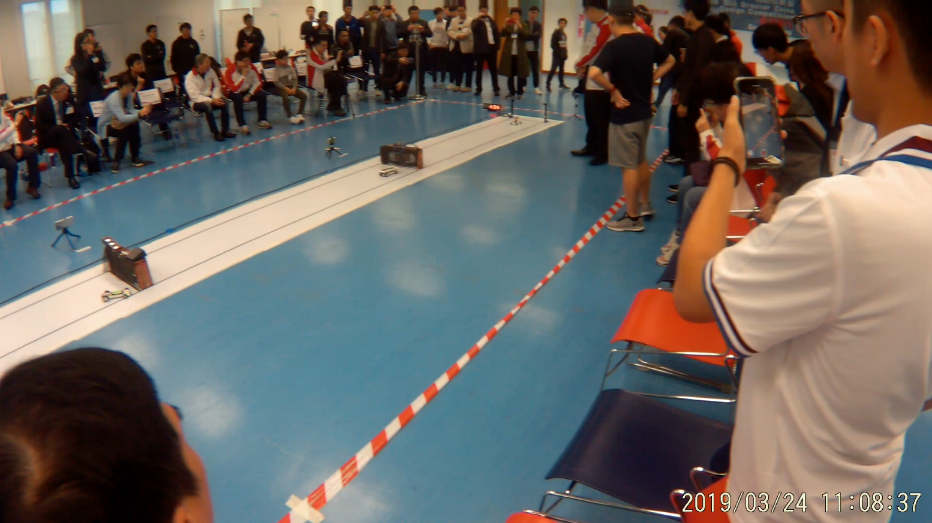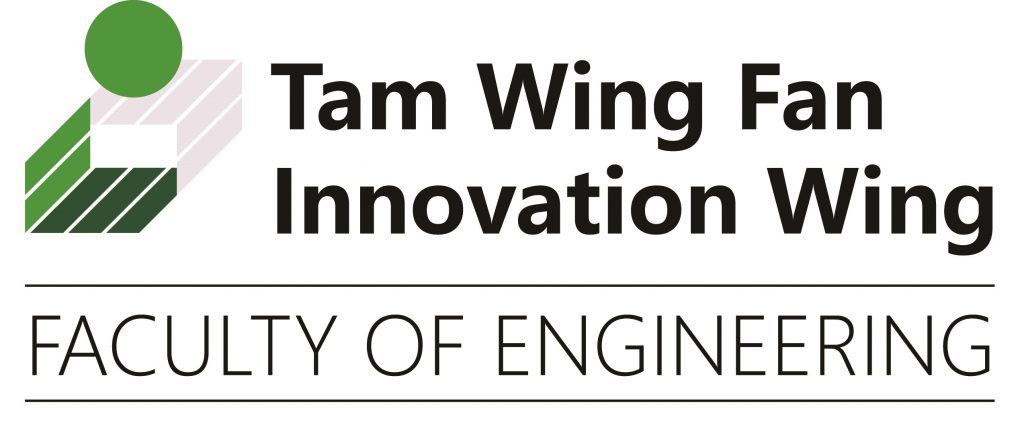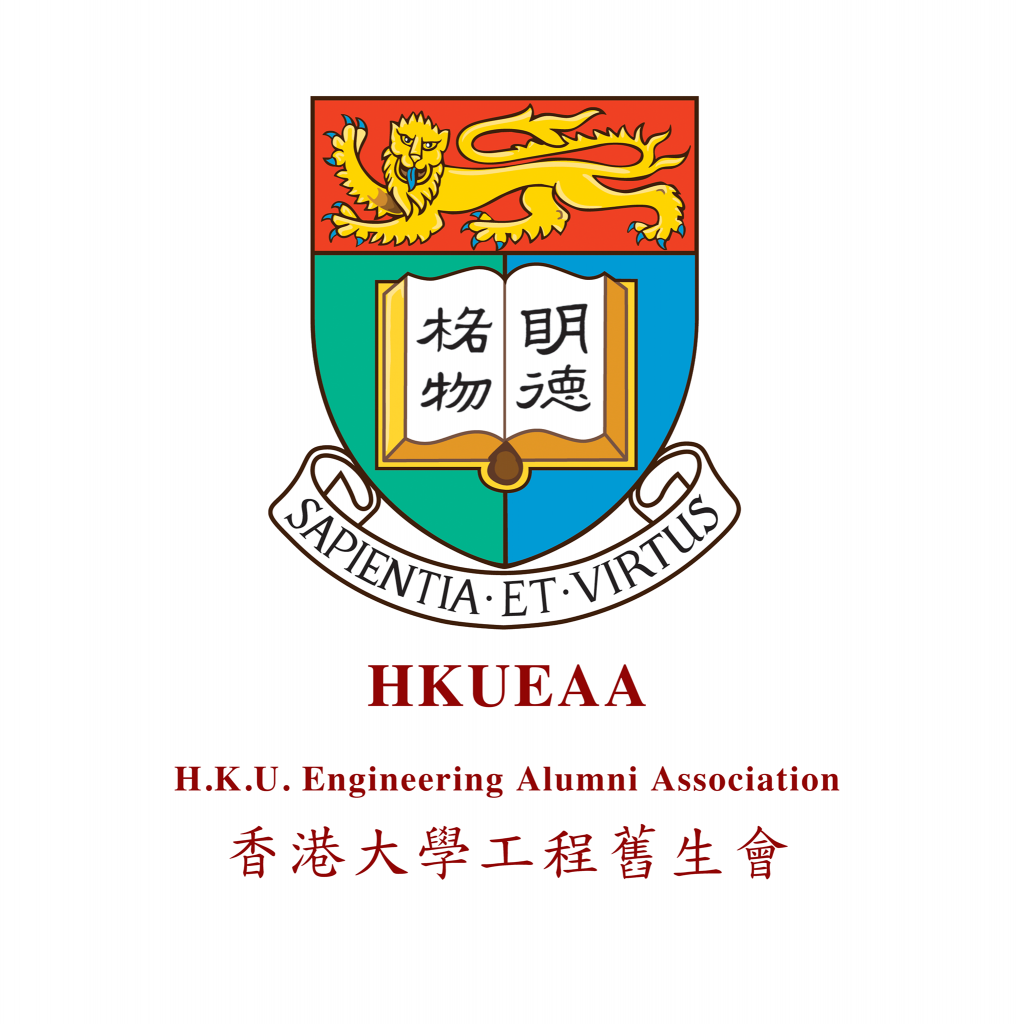On the second day of competition, our team complete the 1st trail of the demonstration and achieve a faster record among all the teams. Unfortunately, one of our cars has a direct collision to the trigger sensor and fail to complete the run. Although the topic seems simple but it is not that easy to have good performance. Only 4 out of the 8 teams could complete the mission during the competition. As active car running direction control is not allowed, it becomes difficult to ensure the reliability of the system. It enforces the students to take care of the alignment and consider passive direction control as well.

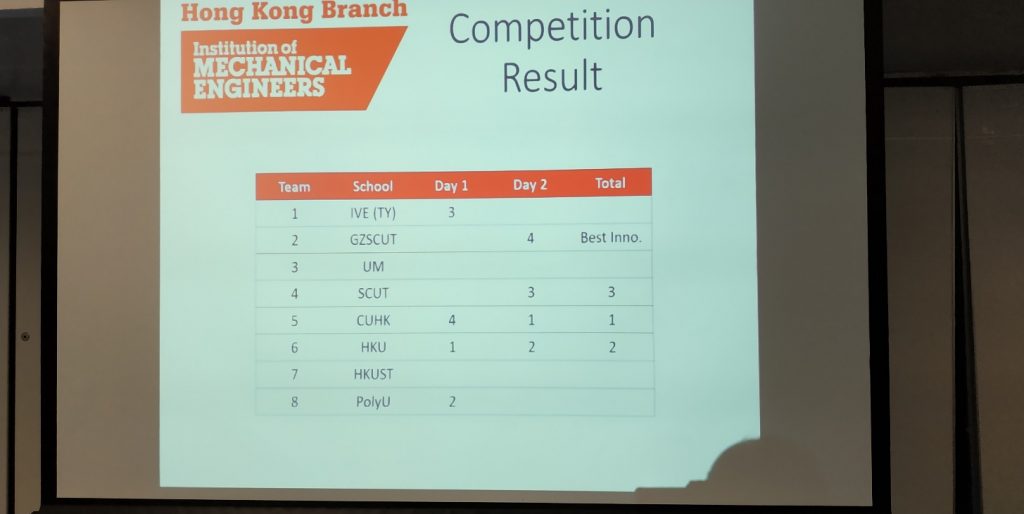

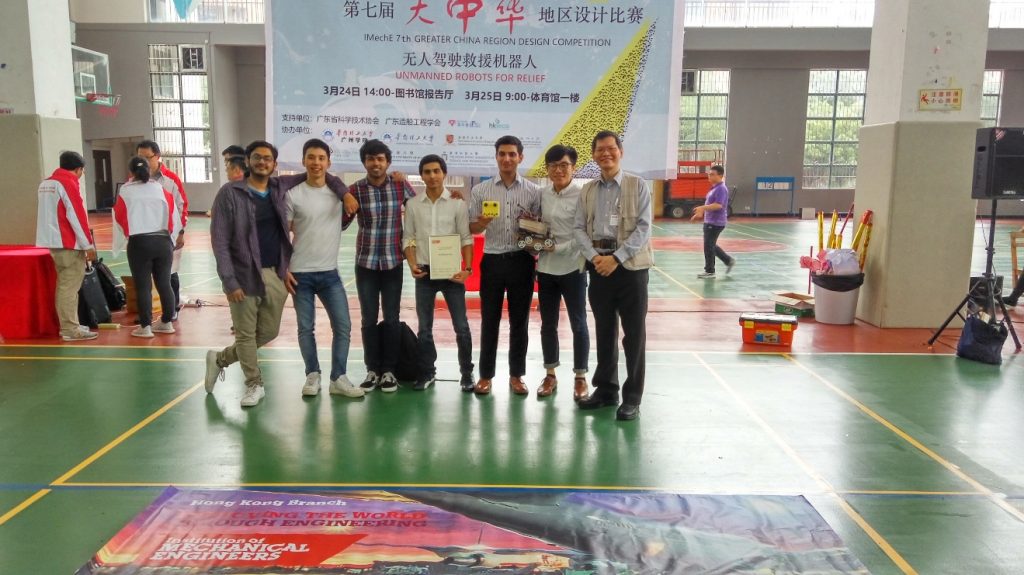
“Looking back, I am very satisfied with my decision to do the IMechE Greater China Design Competition as my capstone project. Along with the technical details and challenges of the competition itself, the opportunity to meet and compare the teams engineering abilities and knowledge to that of our peers in Macau, Hong Kong and Mainland China was very exciting. I was able to see the different approaches taken by the universities, and it was clear that different teams came with very different approaches to the same problem. For example, many teams opted for an on-car sensor system for triggering subsequent cars and even controlling car movement. However, the HKU team had opted for fixed sensors and physical gates to limit and trigger car movement. Through this and other interactions at the event, I learnt about how different engineering approaches can solve the same problem, and gleaned some valuable ideas as well.
Interactions with different team members and professors as we waited to carry out the competition were also interesting. Meeting students from different backgrounds and different approaches to their work broadened my horizons in terms of the scope of engineering. In addition, since these new meetings took place in a city I was visiting for the first time (Macau), there was a genuine sense of adventure and learning in the atmosphere which I greatly enjoyed.
I also enjoyed comparing the various presentations in the first section of the competition. An important aspect emphasized during our capstone project was a focus on presentation of engineering information in addition to traditional engineering work as well. This, along with presentation techniques learnt in our CAES9544 classes allowed us to maximize our score in the presentation section and stand out from our competitors.
Overall, the competition was a unique and enlightening experience. I emerged a better and more rounded engineer as a result and will always remember this experience.”
Arvind Jamkhedkar, Department of Mechanical Engineering
“During the IMechE competition, I felt so excited since I need to use my mechanical knowledge learned in the university to build several model cars. Also, we need to compare with other university teams in the racing competition. It made me so nervous, but I was looking forward to it.
Before the competition, our teammates and I worked hard and tried many prototypes and test run. I like the feeling of teamwork and solving problems. Sometimes we met several problems and new technology that we didn’t learn. But we have to tackle them by self-learning or finding the alternatives.
During the competition, I was shocked by the creativeness and car design of other university teams. They used some innovative method that we didn’t think of, but I was also excited to compare our prototypes and theirs.
Finally, I would like to express my gratitude to Dr C.K. Chan, for his kind guidance to the direction of our project. His suggestions have inspired us to carry out the designs and provided us with enough tools and support.”
Wong Chun Fai, Department of Mechanical Engineering




